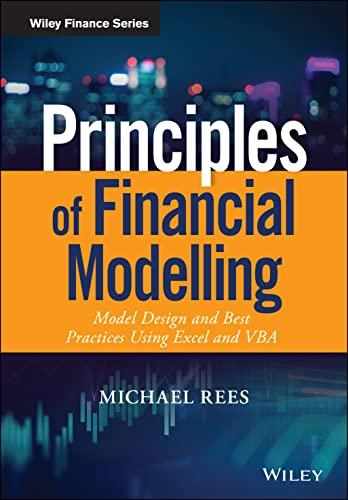Question
(Solve in Excel and show all work) 1. Cherone Equipment, a manufacturer of electronic fitness equipment, wishes to evaluate two alternative plans for increasing its
(Solve in Excel and show all work)
1. Cherone Equipment, a manufacturer of electronic fitness equipment, wishes to evaluate two alternative plans for increasing its production capacity to meet the rapidly growing demand for its key productthe Cardiocycle. After months of investigation and analysis, the firm culled the list of alternatives down to the following two plans that would allow it to meet the forecast product demand. Plan X Use current proven technology to expand the existing plant and semi-automated production line. This plan is viewed as only slightly more risky than the firms current average level of risk. Plan Y Install new, just-developed automatic production equipment in the existing plant to replace the current semi-automated production line. Because this plan eliminates the need to expand the plant, it is less expensive than Plan X but is believed to be far more risky due to the unproven nature of the technology.

a. Assuming the two plans have the same risk as the firm, use the NPV and IRR techniques and the firms cost of capital to evaluate their acceptability.
b. Recognizing the differences in plan risk, use the NPV method and each of the following risk-adjustment techniques and the data given earlier to evaluate the acceptability of the two plans. (i) Certainty equivalent (CEs) (ii) Risk-adjusted discount rates (RADRs)
c. Compare and contrast your findings in (a) and (b). Which plan would you recommend in (a) and (b)? Did explicit recognition of the risk differences of the plans affect this recommendation? Explain
Cherone, which routinely uses NPV to evaluate capital budgeting projects, has a cost of capital of 12%. Currently the risk-free rate is 9%. The firm decided to evaluate the two plans over a 5-year time period, at the end of which each plan would be liquidated. The relevant cash flows associated with each plan are summarized in the following table: Time Onmu 1 2 3 4 5 Plan X -$2,700,000 470,000 610,000 950,000 970,000 1,500,000 Plan Y -$2,100,000 380,000 700,000 800,000 600,000 1,200,000 The firm developed additional data that can be used to adjust the two plans for risk. The data, given in the following table, can be used to adjust either the cash inflows using certainty equivalent (CEs) or the discount rate using risk- adjusted discount rates (RADRs). Time 1 2 3 4 5 - Plan X Plan Y Certainty equivalent factors 1.00 0.90 1.00 0.80 0.90 0.80 0.90 0.70 0.80 0.80 Risk-adjusted discount rate 13% 15%Step by Step Solution
There are 3 Steps involved in it
Step: 1

Get Instant Access to Expert-Tailored Solutions
See step-by-step solutions with expert insights and AI powered tools for academic success
Step: 2

Step: 3

Ace Your Homework with AI
Get the answers you need in no time with our AI-driven, step-by-step assistance
Get Started


